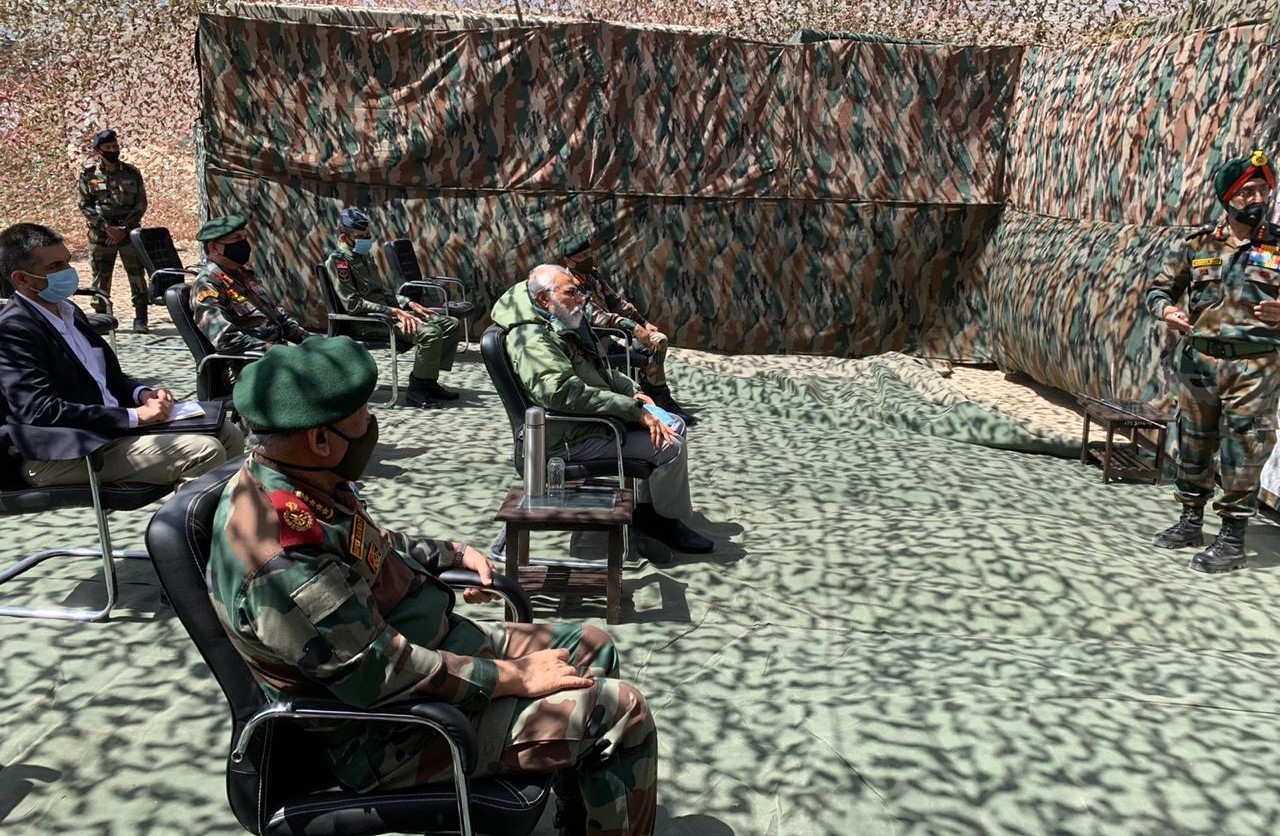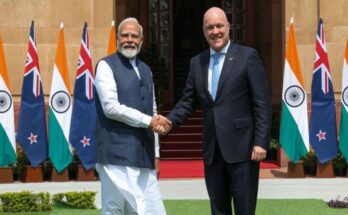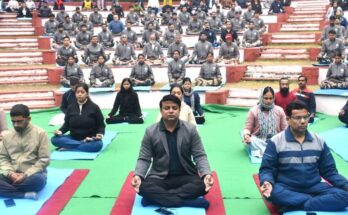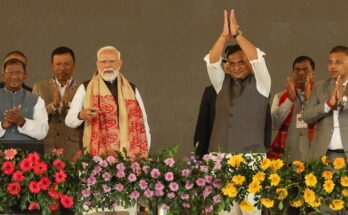It is now clearly conveyed to the nation that India had put China on notice for its recent aggressive conduct on c and warned it of serious consequences of any further misadventure it might be planning against this country. Prime Minister Modi in his ‘Mann ki Baat’ on June 28, which is like an address to the countrymen, talked of India’s strong resolve in dealing with the military face-off with China on the LAC in Ladakh and gave out that ‘a befitting reply had been given to those who cast an evil eye on India’s territory’. He added that ‘India can handle friendly relations but also knows how to look into the eyes of anyone who challenged its sovereignty’.
Giving an insight into India’s strategy, the Prime Minister informed the people that among other things India was taking measures to become self-reliant in various spheres, including indigenous production of defence hardware to meet ‘exigencies of national security and sovereignty’. India has since stepped up border infrastructure development on our side of the LAC as well as mobilisation of troops on the ground — apart from readying our Air Force and Navy for defensive action against any external aggression. The message given to China is loud and clear — stay off from giving any provocation by attempting to encroach on any point of disputed territory along the LAC. Defence of Ladakh is geared up in line with the declared stand of the Modi government that Aksai Chin had been illegally occupied by China and that this matter had to be set right. That India will stretch China on various fronts — economic and geo-political — is emerging as a strategic element of India’s long-term response to the current hostility of this neighbour.
While the situation on the LAC is still evolving, India has from its side confronted China with the demand of return to the status quo ante and engaged that country in border talks at the level of Core Commander on disengagement and deescalation. The government, meanwhile, is keeping up military and foreign policy endeavours to prepare for any aggravation. It is in this background that Prime Minister Modi, in a brief address to the nation on June 30, did not touch on China and confined himself to an announcement of extension of free ration scheme covering nearly 80 crore people for five months — till November end — giving them relief in a difficult time to see through Diwali and Chhat festivals. An added facility of using ration cards on an all- India basis was promised.
The Prime Minister reiterated the need for total caution during the Unlock-2 against corona. He came off as a compassionate leader who appeared to be giving priority to the internal scene relating to people in distress and by not bothering the latter with the issue of India-China tension on the border, also giving a message that his government was fully in control of things on that front. Since the majority of migrants belonged to UP and Bihar, what is the harm if the PM made a mention of the two major festivals of North India in his address to bring some cheer to this distressed lot? Hopefully, the sense of nightmare that crores of migrant labour experienced in the lockdown would be eased substantially — though the crisis of unemployment looming large for them would still confront them. Importantly, the Modi regime remains firm on building the economy indigenously by emphasising the idea of ‘be vocal for local’ and encouraging entrepreneurship and start-ups. Internal stability in India will be determined by the economic recovery.
Coming back to the issue of China’s aggressiveness on the border, it is clear that three aspects of the situation deserved to be taken note of in framing a long-term strategy of dealing with that country. First is the unmistakable fact that the intensification of cross-border terrorism in Kashmir by Pakistan and the military build-up on LAC started by China in the period following the abrogation of Article 370 by India, showed a new level of meeting of minds between these two allies against India — that was part of their bigger geo-political plan of acquiring a firm hold in the crucial Pak-Afghan-Kashmir tri junction. This territory anchored the superpower rivalry in the Cold War era for control of this region — a lesson China would remember as it positions itself as the other superpower in the present, conscious of the advantage it has of having Pakistan on its side. India has to weaken this alliance by carrying the anti-terror combat into the POK and damaging the CPEC where it would hurt China the most. China can create some more mischief on LAC in support of Pakistan but this is nothing that India’s army would not be able to handle.
Secondly, this is the moment for India to build the opinion of the entire democratic world against the dictatorial Chinese regime that was out to disturb world peace in chasing its blatant plans of dominating the world militarily and economically — as a new superpower. India must make it a point to highlight the role of Sino-Pak axis in fomenting terrorism of the Islamic radicals and using it as an instrument of political advancement through proxy wars and cross-border operations. For securing India’s interests in a peaceful and democratic Afghanistan, we should further strengthen bilateral relations with Russia, Israel and Iran in working for a place in the ’round table’ convened to discuss that country’s future — at a time when the US is being expedient about accommodating the Taliban in power there. Fortunately, we have in the NSA and the EAM a very competent, experienced and knowledgable set of people who can achieve the international outreach that India presently needs to counter and override the challenge posed by the China-Pakistan combine.
Finally, it is in the realm of economic relations that India has to find ways and means of scuttling the economic power that China had tried to wield against its opponents, including India. In fact, the tough response of President Donald Trump on the US-China trade imbalance and the more recent US-led campaign against China’s alleged culpability in hiding information relating to corona pandemic from the world — India being on the side of the US in these matters — substantially accounted for the precipitate hostility of China towards India. India’s rightful offer to the businesses seeking to shift away from China, to relocate here added to the Chinese desperation which was reflected in the aggression on LAC. Tension on the borders was intended to project India as a land of conflict and distract global investors from this country. As important as the marshalling of defence preparedness against China, therefore, are the moves of India to battle with the latter on the economic turf. India has set the ball rolling by banning some 59 Apps of Chinese origin and linking it with the call for development of indigenous products and services to make India self reliant in all fields, including defence production.
Prime Minister Modi has clearly embarked on a comprehensive strategy of military consolidation, economic recovery and deeper collaboration with friendly powers to deal with the emerging challenges — particularly the threat posed by China in the immediate and long range. India’s relations with China of Xi Jinping can become irreversibly antipathetic unless China strikes a peace chord by retracing its steps in Galwan valley. People must rally behind the effort of Modi regime to safeguard national security and integrity — at a time when the corona pandemic has compounded the problems of the common Indian at home. Prime Minister Modi in his address on June 30 acknowledged the silent contribution of the farmer and the tax payer to the well-being of the nation. It is a matter of satisfaction for the nation that the Prime Minister has shown a rare capability of handling multiple crises with calm and confidence.




